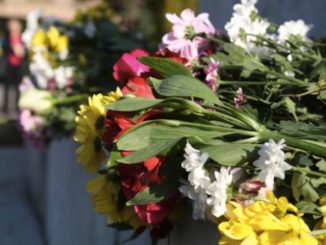
Government has remained reluctant to promote a public facing strategy that informs the public on how to protect venues from attack and stay safe during an attack, writes Chris Kumeroa, Chair of the Crowded Places Security Advisory Group.
The unthinkable happened on 15 March 2019. The survivors and their families, and the families of the 51 souls whose lives were tragically cut short that day, shoulder an unimaginable grief. The nation has grieved with them, and our memory of those who were lost serves to remind us of our responsibility to embrace our collective diversity and to reject ideologies of hate.
Terrorism and violent extremism remain persistent threats throughout the world, and places where people congregate, whether a place of worship, a shopping mall, a street parade, concert, or a train station at peak hour, are particularly vulnerable. These ‘crowded places’ are attractive venues for attackers whether they’re fuelled by extremist ideology or by something else, such as a grievance fixation, or drug or health issues.
Five years on from the Christchurch attacks, however, New Zealanders who frequent crowded places remain just as vulnerable, and our government remains reluctant to promote a public facing strategy that engages with and informs the public on how to identify a potential attack, protect venues from attack, and stay safe during an attack.
That’s not to say that the information isn’t there. As a result of the recommendations of the Royal Commission of Inquiry into the terrorist attack on Christchurch masjidain, some excellent documents, such as Protecting our Crowded Places from Attack: New Zealand’s Strategy and Kia mataara ki ngā tohu – Know the signs: a guide for identifying signs of violent extremism have been produced. Unfortunately, they’re largely gathering dust on agency websites.
Read this article in the digital edition:
One might have assumed that five years since March 2019, the “escape, hide, tell” drill for attacks would have become as widely rehearsed across Aotearoa – or at least as widely known – as “drop, cover, hold” is for earthquakes. But it’s nowhere near it.
There’s been no high-profile launch, no Cabinet Minister front person, no media campaign, no noticeable public service advertising, no public discussion beyond invited expert and stakeholder groups. In short, no apparent political will to get New Zealanders talking about how to protect themselves against an attack.
Royal Commission of Inquiry
The situation is at odds with the findings of the Royal Commission of Inquiry (RCOI).
The RCOI Report found that had “there been a threat agnostic public-facing counter-terrorism strategy that incorporated a “see something, say something” policy, there would have been an increased chance” of the Christchurch attacker’s preparations being noticed and reported.
It also found that if a public facing counter-terrorism strategy relating to risk mitigation measures and managing crowded places had been implemented before 15 March 2019, it “may well have reduced the loss of life resulting from the terrorist attack”.
“… despite some good yet thinly resourced outreach work by the New Zealand Police, the crowded places strategy remains largely unknown to the broader public.”
Yet, it goes on to note that the extent of promotion of the government’s February 2020 Countering Terrorism and Violent Extremism Strategy Overview was its publication on the website of the Department of Prime Minister and Cabinet. Unsurprisingly, and as the report noted, it attracted little public attention.
The aforementioned crowded places strategy, noted the Report, was whispered into the public domain via a New Zealand Police media release and publication on government agency websites. By contrast, Australia’s crowded places strategy, released in 2017, hit the national media across the ditch after it received a Prime Ministerial launch.
Crowded Places Strategy still unknown
The crowded places strategy, which forms part of the Countering Terrorism and Violent Extremism Strategy, provides guidelines and tools to help owners and operators of crowded places reduce the chance of an attack occurring, and lessen its consequences, using methods that are proportionate to the potential threats they face.
To be fair, government ministers would have understandably been loath to promote the strategy when it was published in September 2020. COVID lockdowns meant that previously crowded places were empty – and financially hurting, and there was a national election around the corner.
But it’s now 2024. Lockdowns are behind us, crowded places are crowded again, and we have a new government. Yet despite some good yet thinly resourced outreach work by the New Zealand Police, the crowded places strategy remains largely unknown to the broader public.
The threat of armed terrorist, criminal, or fixated person attack hasn’t disappeared. Our society is increasingly challenged by tensions exacerbated by international conflicts, political polarisation, socioeconomic divides, mis/disinformation, and distrust in traditional political institutions. We’re no less likely to experience an attack now than we were in 2019.
To put it into numerical perspective, according to the 2023 National Security Public Survey, 68% of New Zealanders perceived that there is a real threat of “terrorist attack / violent extremism in NZ” in the next 12 months. Our national terrorism threat level is currently at ‘Low’, but that still means a “terrorist attack, or violent criminal behaviour, or violent protest activity is assessed as a realistic possibility.”
Time for political leadership
As Chair of the Crowded Places Security Advisory Group (CPSAG), a voluntary security industry body established on the suggestion of the Police to identify how industry might contribute its expertise to support the crowded places strategy, I call on our national government to give the strategy the hard launch that New Zealanders need it to have.
Five years on from the Christchurch attack, two and a half years after the LynnMall attack, 16 months since it came to light that a radicalised teen had planned to carry out an attack on locations in Auckland, less than a year since a mass shooting at an Auckland CBD construction site resulted in three deaths and several wounded, and six years since police thwarted a heavily armed teen’s plan to shoot teachers and classmates at a South Island school, political leadership in socialising attack preparedness and response guidance is long overdue.
Let’s get a national conversation started on protecting our places of worship, our office buildings, our tourist attractions, our construction sites, our Sunday markets, our schools and universities, our bars and restaurants, and our shopping malls. Let’s start talking about “escape, hide, tell”.
The threat of armed attack is an uncomfortable topic on many levels, but that’s no reason to shy away from it. If 15 March 2019 has taught us anything it’s that the unthinkable can – and will – happen where and when we least expect it. The greatest threat to our security, our safety, is thinking there is no threat at all.









